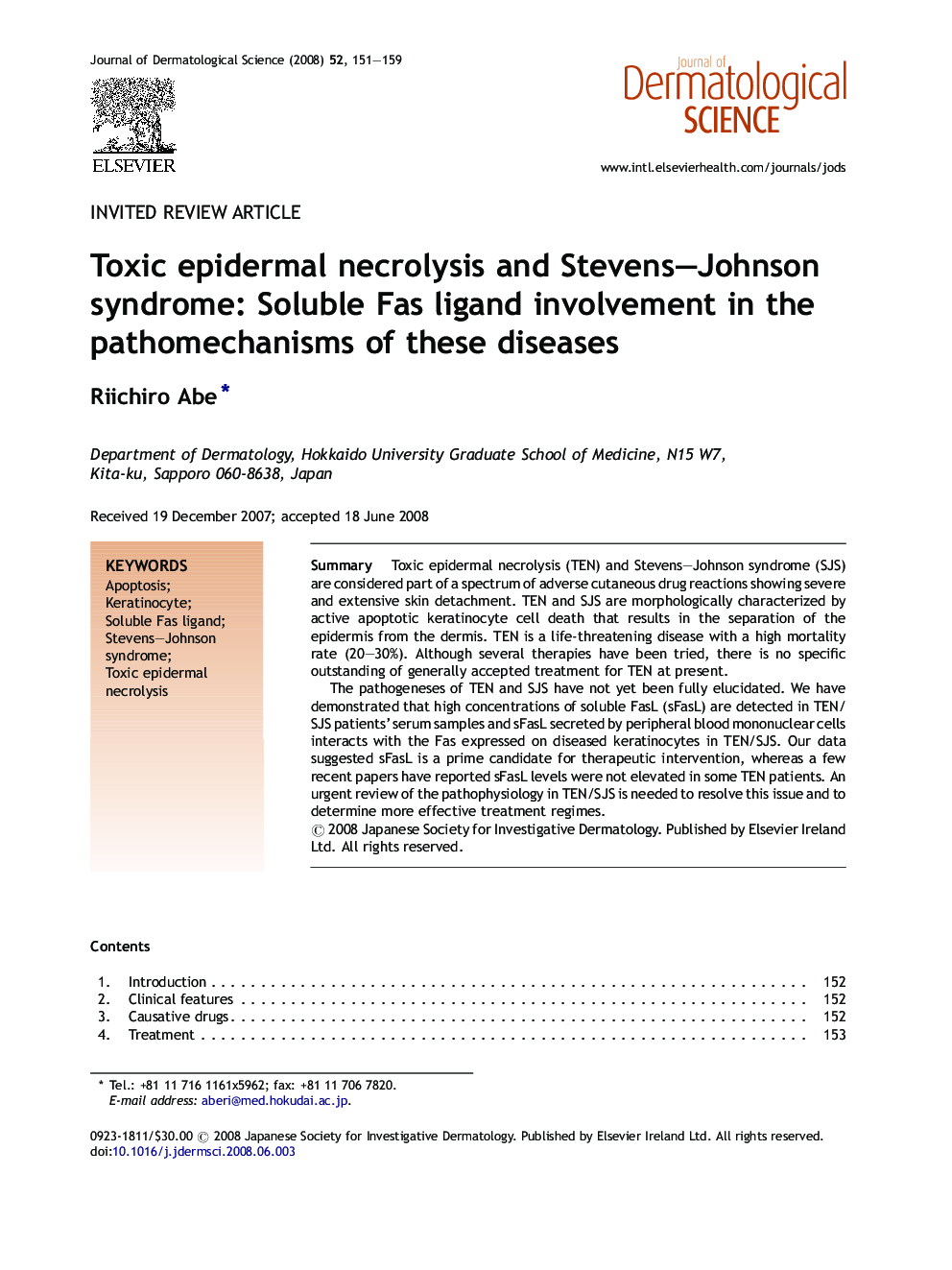| کد مقاله | کد نشریه | سال انتشار | مقاله انگلیسی | نسخه تمام متن |
|---|---|---|---|---|
| 3213940 | 1203260 | 2008 | 9 صفحه PDF | دانلود رایگان |

SummaryToxic epidermal necrolysis (TEN) and Stevens–Johnson syndrome (SJS) are considered part of a spectrum of adverse cutaneous drug reactions showing severe and extensive skin detachment. TEN and SJS are morphologically characterized by active apoptotic keratinocyte cell death that results in the separation of the epidermis from the dermis. TEN is a life-threatening disease with a high mortality rate (20–30%). Although several therapies have been tried, there is no specific outstanding of generally accepted treatment for TEN at present.The pathogeneses of TEN and SJS have not yet been fully elucidated. We have demonstrated that high concentrations of soluble FasL (sFasL) are detected in TEN/SJS patients’ serum samples and sFasL secreted by peripheral blood mononuclear cells interacts with the Fas expressed on diseased keratinocytes in TEN/SJS. Our data suggested sFasL is a prime candidate for therapeutic intervention, whereas a few recent papers have reported sFasL levels were not elevated in some TEN patients. An urgent review of the pathophysiology in TEN/SJS is needed to resolve this issue and to determine more effective treatment regimes.
Journal: Journal of Dermatological Science - Volume 52, Issue 3, December 2008, Pages 151–159